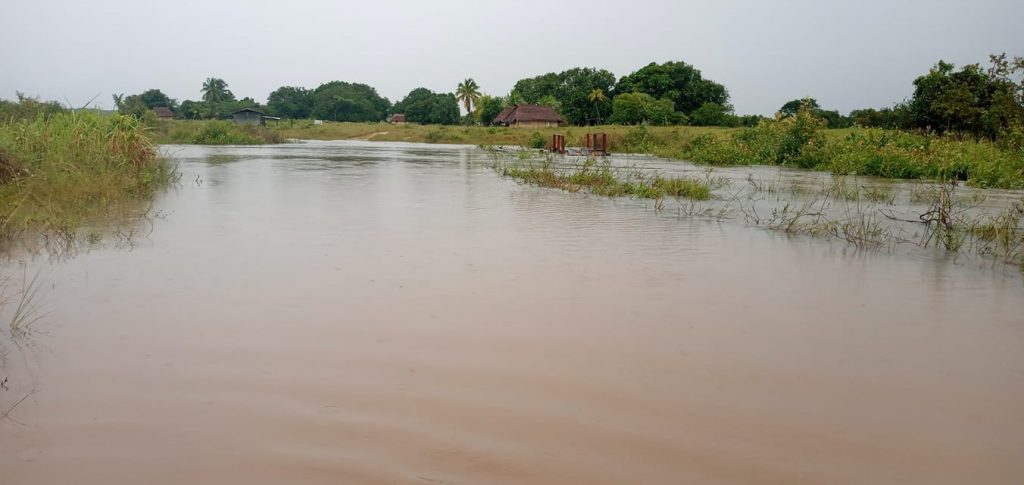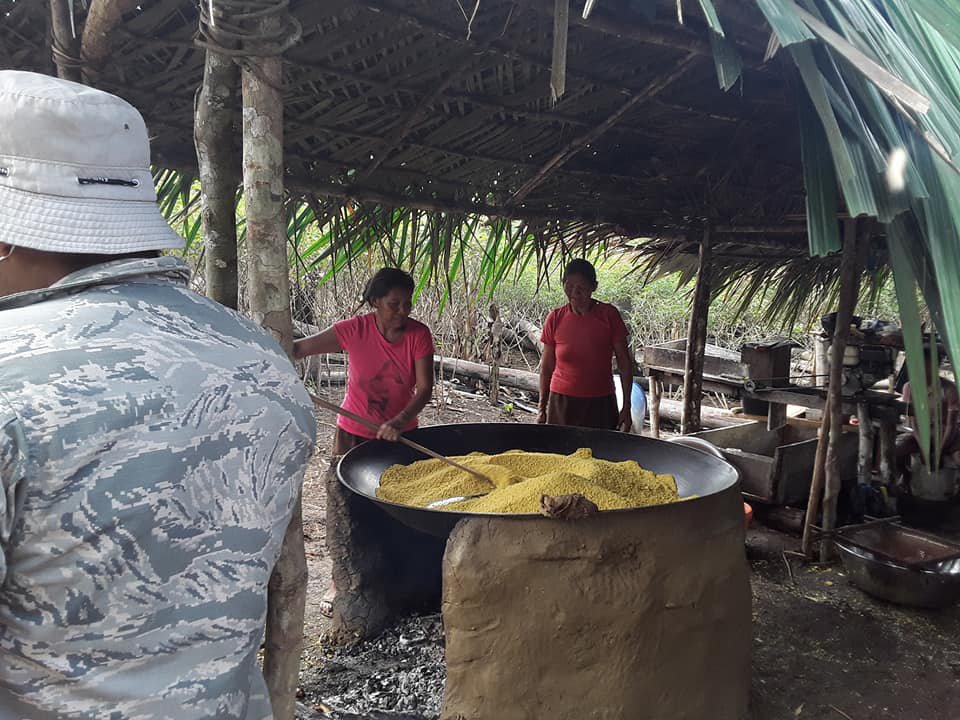Flood-affected Reg. 9 farmers losing large sums of money - News Room Guyana

By Vishani Ragobeer
Cassava, a staple food of the diet for many indigenous people across Guyana, is a crop that grows underground. It is used to make farine and cassava bread, which are staple food in addition to piwari, a mildly alcoholic drink, and cassareep, which is used as a base for sauces.
In the community of Aishalton, in the Deep South Rupununi area of Region Nine (Upper Takutu-Upper Essequibo), Toshao Michael Thomas highlighted that many of the farmers have small farms, only about one or two acres in size.
On these farms, he explained, some farmers engage in subsistence farming while others would market their cassava products on a small scale. Thomas, during an interview with the News Room, related that a typical farm would be able to produce enough cassava to make about 20 bags of farine and if sold, each bag carries a cost of about $15,000. Altogether, 20 bags of farine cost $300,000.
But, now that the region- as well as most other regions locally- are grappling with a worse-than-normal rainy, wet season, these farmers are particularly hard-hit.
“We have over 60 farms that are damaged by the heavy rainfall,” Toshao Thomas lamented on Friday.

While providing an update on the situation in his community of Aishalton, the Toshao further explained that even though there has not been any rainfall over the past two days, the accumulated water has resulted in water-logged farms. And, since cassava crops grow under the ground, this situation has been particularly detrimental to the crops.
In an attempt to salvage at least some of the cassava crops, the Toshao said that the village council has asked the regional authorities and the Civil Defense Commission (CDC) for barrels or other containers to help store the cassavas that have been dug up.
The woes faced by the cassava farmers are not limited to those in Aishalton.
In the Deep South village of Karaudarnau, cassava farmer, Peter Isaacs, lamented, “All the cassava underwater and the crops may die as long as the weather stay like this…. The majority of farmers are in the same situation.”
The farmer also related that containers would enable the farmers in his village to salvage at least some of their crops.
On Friday, the Toshao of Karaudarnau, Apollas Isaacs told the News Room that there are more than 700 residents in this village. Here, farmers engage in both subsistence farming and as a major economic activity.
“The farmers are affected by the floods and (on) the ranches, the animals are dying,” Toshao Isaacs bemoaned.
His village has, however, received some relief from the CDC and regional authorities. According to him, 25 bags of food items were provided. Though this is not enough for the more than 120 farmers in the community, he explained that the food items were shared equally.
During a recent visit to the region, Prime Minister Brigadier (Ret’d) Mark Phillips told the regional authorities and some affected residents that there will be continuous monitoring of the situation and that support will be provided to mitigate the impact of the flooding.
2021-05-28 21:35:09Z
https://newsroom.gy/2021/05/28/flood-affected-reg-9-farmers-losing-large-sums-of-money/
CBMiV2h0dHBzOi8vbmV3c3Jvb20uZ3kvMjAyMS8wNS8yOC9mbG9vZC1hZmZlY3RlZC1yZWctOS1mYXJtZXJzLWxvc2luZy1sYXJnZS1zdW1zLW9mLW1vbmV5L9IBAA

No comments:
Post a Comment